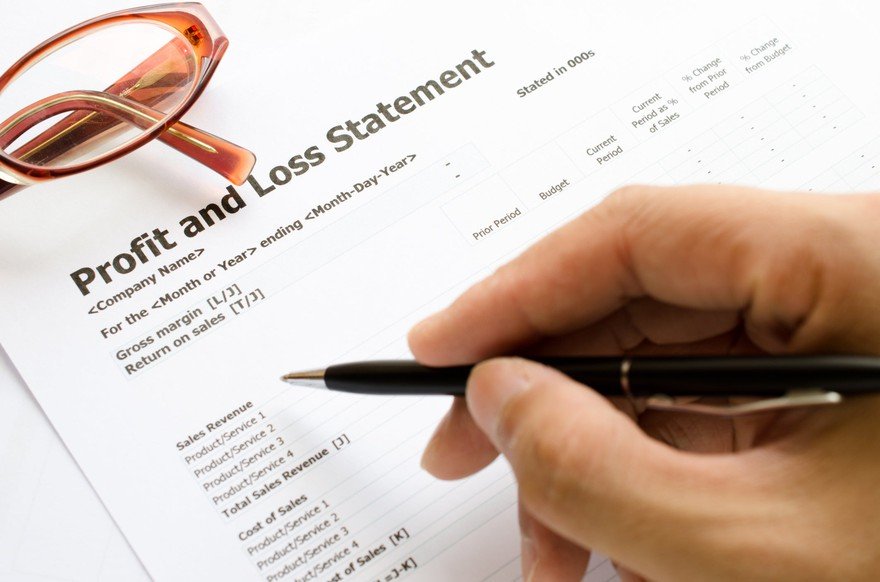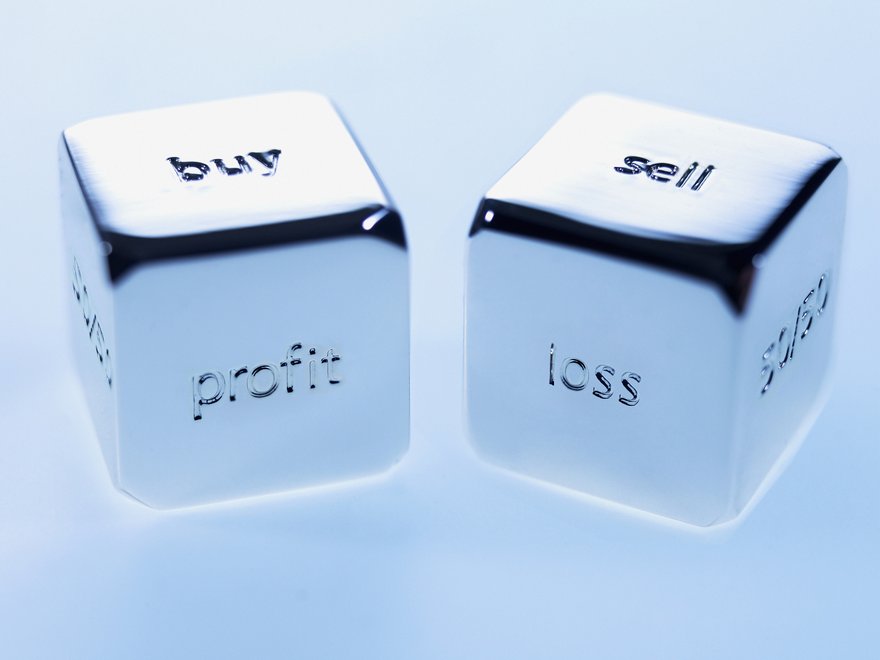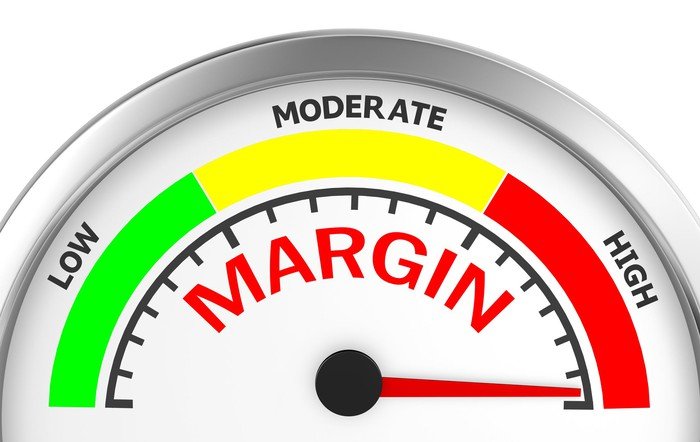A basic understanding and ability to analyze a company's profit and loss statement, also known as an income statement, is an essential skill for any investor. The profit and loss statement is an overview of how much revenue the company generated, all the business expenses, other gains or losses, and how much profit (or loss) it made over a specified time frame. It also breaks down key expenses that may be pertinent to investors.
You can find a company's profit and loss statement in its quarterly and annual reports filed with the U.S. Securities and Exchange Commission (SEC). Here's what stock market beginners need to know to make sense of all the numbers.
SEC (Securities and Exchange Commission)

Understanding them
Understanding profit and loss statements
Every publicly traded company is required to file a profit and loss statement with the SEC every quarter. When a company files its quarterly earnings, it also includes two other important financial statements: a statement of cash flows and an up-to-date balance sheet.
Fiscal Quarter
The details of a profit and loss statement may vary from company to company, but they all follow the same basic outline. At the top of the statement, the company shows how much revenue it generated during the statement period. Companies with several business segments may break out revenue for each separate division.
Revenue
Below that, the statement shows the cost of sales or cost of goods sold. These are the costs directly associated with the goods sold, including inventory, raw materials, and labor costs directly used to create the goods.
The next section of the statement will show operating expenses. Common operating expenses include marketing, general and administrative expenses, and research and development. Some companies will provide more details by breaking out certain expenses specific to their business.
The profit and loss statement may also indicate gains or losses from the sale of assets or long-term investments. It could also break out one-time expenses, such as a lawsuit settlement. These gains and losses are important for investors to note, but they're generally nonrecurring.

Businesses will also show their interest and tax liabilities on the profit and loss statement. This section provides a snapshot of how much the company is paying to service its debt and its effective tax rate.
Finally, at the bottom of the statement is net income or loss. This number simply takes all of the company's revenue and subtracts all of its expenses -- the cost of goods sold, operating expenses, and interest and tax. The result is a snapshot of profitability during the reporting period.
The amount of net income at the bottom of the profit and loss statement is the first item on a statement of cash flows for the same period. The cash-flow statement takes net income and adjusts for non-cash expenses on the profit and loss statement, as well as other cash expenditures that don't fall on the profit and loss statement, to show the amount of cash the company generated or used.
On the balance sheet, net income flows to the stockholder's equity portion. Any net income that isn't distributed to the owners in the form of a dividend is categorized as retained earnings.
Types
Types of profit and loss statements
There are two accounting methods businesses can use when determining their revenue and expenses on the profit and loss statement -- the accrual method and the cash method.
Most publicly traded companies use the accrual method. Under the accrual method, revenue and expenses are recorded when they're accrued instead of waiting for payment.
For example, if a business sells a lot of its products in a retailer's inventory channel but won't receive payment for 30 days, it still records the revenue when it makes the deal. Likewise, if a company knows it owes taxes on its earnings but doesn't have to pay the bill until after the quarter ends, it still accounts for the expense when the liability occurs.
Under the cash accounting method, revenue and expenses are only recorded when payment changes hands. This can provide a skewed snapshot of the business since it may have a lot of accounts payable or accounts receivable. It's more appropriate for small businesses due to the simplicity of accounting.
Example
Example of a profit and loss statement
Below is an annotated reproduction of Apple's (AAPL 0.51%) profit and loss statement for its fiscal 2021, which ended Sept. 25, 2021. The figures shown are in millions.
| Period | 12 months ending 9/25/2021 | Notes |
|---|---|---|
| Net sales | Apple breaks out two segments. | |
| Products | $297,392 | |
| Services | $68,425 | |
| Total net sales | $365,817 | Total revenue, or net sales. |
| Cost of sales | ||
| Products | $192,266 | |
| Services | $20,715 | |
| Total cost of sales | $212,981 | |
| Operating expenses | ||
| Research and development | $21,914 | |
| Selling, general, and administrative | $21,973 | |
| Total operating expenses | $43,887 | |
| Other income | $258 | One-time gains (or losses). |
| Income tax provisions | $14,527 | An example of accrual accounting. |
| Net income | $94,680 |
How to evaluate
How to evaluate a profit and loss statement
The profit and loss statement provides a lot of valuable insight into a company's health and performance relative to its peers.
With the data from the profit and loss statement, an investor can determine the company's profit margins. Key profit margins to calculate include its gross margin, operating margin, and net profit margin.
The gross margin is simply how much profit a business makes on each sale. Subtract cost of goods sold from revenue and divide the result by revenue. If a business breaks out sales and cost of sales by segment, investors can calculate gross margins for each division.
Operating margin subtracts both cost of goods sold and operating expenses from revenue and divides the results by total revenue. It may be a useful practice to break out each operating expense as a percentage of revenue or as a percentage of total operating expenses to see where a business is spending much of its overhead.
Finally, net profit margin is simply the ratio of net income to revenue. This margin shows how much shareholders keep from each sale.

Once those profit margins are calculated, investors can compare the numbers over time for a company to see how the business is progressing. Ideally, businesses can produce expanding profit margins as revenue increases.
Sometimes, however, companies create new products or services that generate lower profit margins but fuel revenue growth. Examining changes in individual line items from year to year can also provide insight into what management is prioritizing.
It's also valuable to compare those profit margins to competitors. If one competitor produces much higher profit margins, it may be worth exploring.
A big company with stable revenue producing a strong operating margin may indicate the potential profitability of a small company in the same industry that's still growing rapidly. On the other hand, a company with a much higher gross margin may have a unique competitive advantage that competitors won't be able to copy.
Related investing topics
Use them to guide investments
Use the profit and loss statements to guide investments
As an investor, being able to read and analyze a profit and loss statement can provide valuable insights into how a business operates. It shows how healthy the business is relative to its peers and prior years.
Carefully reading the profit and loss statement can also give investors clues about which areas of the business to focus their analysis. They should also pay attention to management's commentary during quarterly earnings calls for their insights on its spending and growth.
Taking time to look over a company's profit and loss statement is an essential step in determining whether a company's stock will make a good investment.










